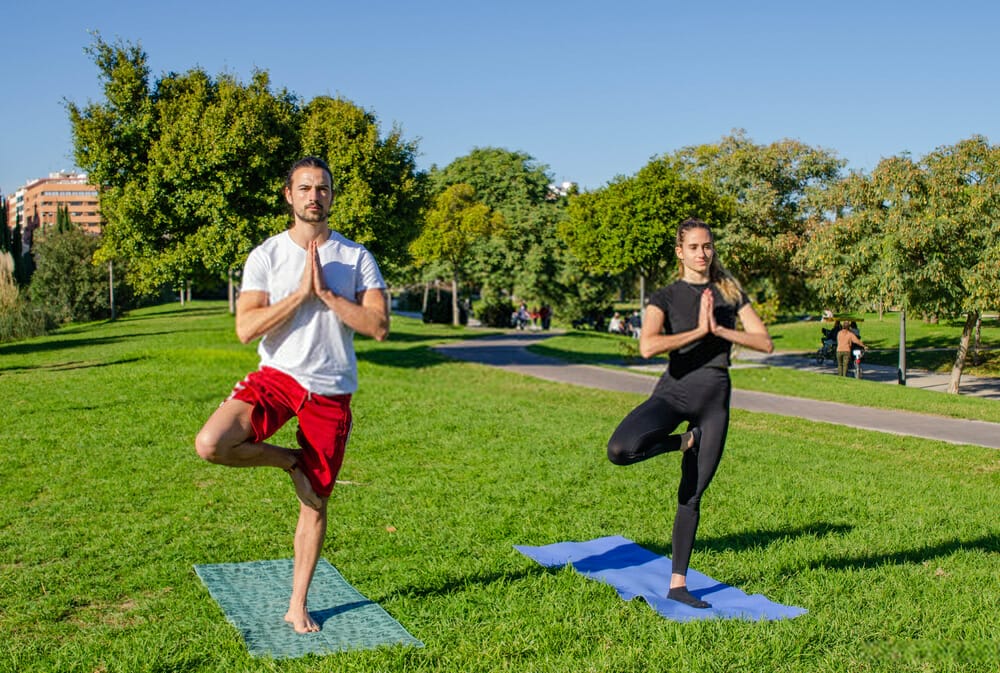Ashtanga Yoga For Beginners
If it is your first time trying ashtanga yoga, you may not know what to expect.
This yoga practice has an order of postures, which is different from other types of yoga. For beginners or people who are new to yoga, you may need some time to get used to it.
Read through this blog post, and you will get some ideas as a beginner's guide to the ashtanga yoga practice!
As a beginner, the first question you will ask is, “What is ashtanga yoga?”
Ashtanga Yoga translates to "eight limbs of yoga," which are rules that yoga practitioners should follow to live a more disciplined life.
This form of yoga is divided into six series or levels of postures whose difficulty level rises as they progress.
The first level is Tadasana to Savasana (Mountain to Corpse Pose) Poses, which helps tone up the body. Tadasana is the first pose, and Savasana is the last pose.
This level should take about 6-8 months to master. It is best to practice this level before moving into more advanced poses.
Let’s have a quick glance at these poses:
Mountain Pose (Tadasana)
Mountain Pose, a foundation asana, provides grounding and stability that also helps to relax the mind. It assists you in regaining your equilibrium and allowing you to concentrate.

Chair Pose (Utkatasana)
Chair Position is another pose frequently taught to Ashtanga yoga beginners. It develops the muscles in your arms and legs, which you need to perform many more advanced postures. It also expands the chest region.
Downward Dog (Adho Mukha Svanasana)
Downward Dog is a common position that you can use for a variety of purposes. It elongates the hamstrings.

It relieves stiffness and obstructions across the back. And it's a fantastic stress-relieving position, as well as a treatment for anxiety, depression, sleeplessness, and other related issues.
Thunderbolt Pose (Vajrasana)
Thunderbolt Pose, an essential seated asana, is a simple asana for Ashtanga yoga beginners to practice.
It is a beneficial asana for digestion that straightens the spine and eliminates obstructions in this area.
Thunderbolt Pose is also good for your lungs and promotes blood circulation strengthening the pelvic area. It’s also excellent for meditation.
Tree Pose (Vrksasana)
Among the Ashtanga yoga positions for beginners, Tree Pose is an interesting one. The emphasis of this asana is on balance.

It strengthens the legs, increases self-confidence, and enhances focus. It takes some practice to get it properly, but it's well worth it!
Triangle Pose (Trikonasana)
Triangle Pose stretches and expands the sides of the waist and hips, two of the body’s least exercised regions.
As a result, it is excellent for strengthening the arms, core muscles, and legs. In addition, this position expands the chest and increases lung capacity.
Lotus Pose (Padmasana)
Lotus Pose is a popular yoga asana. It provides grounding and aids in contemplative meditation. Lotus Pose aids in digestion, promotes excellent posture, and relaxes the mind. It also improves lower-body flexibility. This posture is supposed to recharge one’s batteries.

Corpse Pose (Savasana)
Without Corpse Pose, no Ashtanga yoga sequence is complete. The results of all yoga practices are absorbed during this asana.
It lowers adrenaline levels and induces a state of total calm. You awaken feeling revitalized and rejuvenated!
Conclusion
As a beginner practitioner, it’s essential to start with the first series of poses before moving to more advanced levels.
Pick out these poses and practice them separately, and make sure you learn each poses appropriately.
Always stay calm and relaxed during your practice so that the benefits can fully manifest in your body and mind!
Namaste!







